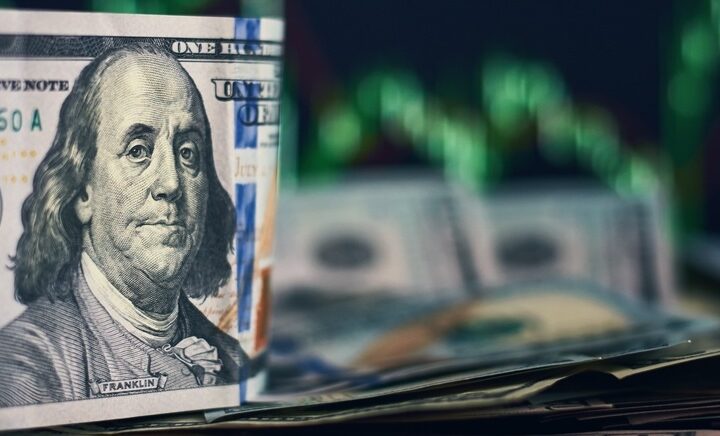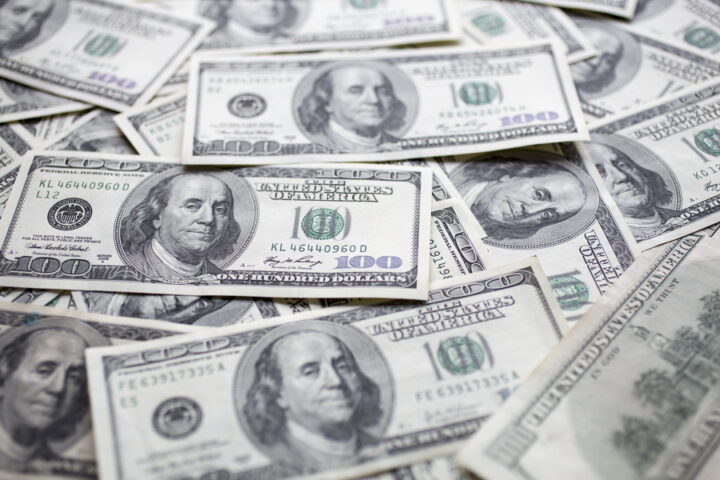The dollar hit a six-month high against a basket of major currencies on Tuesday, benefiting from weakness in commodities, as investors looked beyond U.S. growth worries to a slowing global economy.
The euro slid to a six-month low against the dollar, while the pound slipped below $1.90 to a 21-month trough, as fears grew that economic malaise in the United States is leading to a broader global slowdown.
The euro has seen a sustained fall since European Central Bank President Jean-Claude Trichet said last week the euro zone economy was slowing more than policymakers had expected.
It has broken a series of key chart levels, convincing some analysts that the dollar may be ending its seven-year slide.
"As long as we see commodity prices moving lower … we still see a downside in euro/dollar medium to long term," said Michael Klawitter, currency strategist at Dresdner Kleinwort in Frankfurt. However he said there was potential for short-term recovery in the euro given technical positioning, and that it should be supported for now at around these levels.
"The move in favour of the dollar over the last week has pretty much come to an end, and with the market being clearly overbought dollar and oversold euro/dollar and so on, I think the risk of technical bounces (for the euro) is significant."
By midday Tuesday, the euro was down at $1.4890 after touching a six-month low of $1.4812, according to Reuters data. The dollar index, which measures the U.S. unit against a basket of six currencies, rose to 76.362, a six-month high. The index has surged more than 4% — on track for its biggest such winning streak in 13 years.
The dollar was steady at 110.13 yen, within striking distance of a seven-month peak of 110.40 hit on EBS the previous day, while the euro was steady at 164. The pound fell to a 21-month trough against the dollar of $1.8970 before recovering slightly to trade at $1.9012, while the dollar was well bid at CHF 1.0900 against the Swiss franc.
The U.S. economy is still ailing with the financial sector reeling from a year-old credit crisis, but analysts say the outlook elsewhere in the world has buoyed its position.
The euro area and Britain have buckled under the twin strains of higher inflation and fading growth.
However there are still risks for the dollar from U.S. data if it comes in much weaker than expected. Tumbling commodity prices hit the high-yielding Australian dollar, which sank to a seven-month low against the U.S. dollar, also weighed by expectations of lower interest rates.
On Monday the Reserve Bank of Australia said the economy seemed to be slowing enough to reduce inflation significantly over time.
Adding to the case for a cut in Australian rates, a key measure of business conditions struck its lowest level in seven years in July as firms reported falling sales and profitability.
What Are Cookies
As is common practice with almost all professional websites, our site uses cookies, which are tiny files that are downloaded to your device, to improve your experience.
This document describes what information they gather, how we use it and why we sometimes need to store these cookies. We will also share how you can prevent these cookies from being stored however this may downgrade or ‘break’ certain elements of the sites functionality.
How We Use Cookies
We use cookies for a variety of reasons detailed below. Unfortunately, in most cases there are no industry standard options for disabling cookies without completely disabling the functionality and features they add to the site. It is recommended that you leave on all cookies if you are not sure whether you need them or not, in case they are used to provide a service that you use.
The types of cookies used on this website can be classified into one of three categories:
- Strictly Necessary Cookies. These are essential in order to enable you to use certain features of the website, such as submitting forms on the website.
- Functionality Cookies.These are used to allow the website to remember choices you make (such as your language) and provide enhanced features to improve your web experience.
- Analytical / Navigation Cookies. These cookies enable the site to function correctly and are used to gather information about how visitors use the site. This information is used to compile reports and help us to improve the site. Cookies gather information in anonymous form, including the number of visitors to the site, where visitors came from and the pages they viewed.
Disabling Cookies
You can prevent the setting of cookies by adjusting the settings on your browser (see your browser’s “Help” option on how to do this). Be aware that disabling cookies may affect the functionality of this and many other websites that you visit. Therefore, it is recommended that you do not disable cookies.
Third Party Cookies
In some special cases we also use cookies provided by trusted third parties. Our site uses [Google Analytics] which is one of the most widespread and trusted analytics solutions on the web for helping us to understand how you use the site and ways that we can improve your experience. These cookies may track things such as how long you spend on the site and the pages that you visit so that we can continue to produce engaging content. For more information on Google Analytics cookies, see the official Google Analytics page.
Google Analytics
Google Analytics is Google’s analytics tool that helps our website to understand how visitors engage with their properties. It may use a set of cookies to collect information and report website usage statistics without personally identifying individual visitors to Google. The main cookie used by Google Analytics is the ‘__ga’ cookie.
In addition to reporting website usage statistics, Google Analytics can also be used, together with some of the advertising cookies, to help show more relevant ads on Google properties (like Google Search) and across the web and to measure interactions with the ads Google shows.
Learn more about Analytics cookies and privacy information.
Use of IP Addresses. An IP address is a numeric code that identifies your device on the Internet. We might use your IP address and browser type to help analyze usage patterns and diagnose problems on this website and to improve the service we offer to you. But without additional information your IP address does not identify you as an individual.
Your Choice. When you accessed this website, our cookies were sent to your web browser and stored on your device. By using our website, you agree to the use of cookies and similar technologies.
More Information
Hopefully the above information has clarified things for you. As it was previously mentioned, if you are not sure whether you want to allow the cookies or not, it is usually safer to leave cookies enabled in case it interacts with one of the features you use on our site. However, if you are still looking for more information, then feel free to contact us via email at [email protected]







